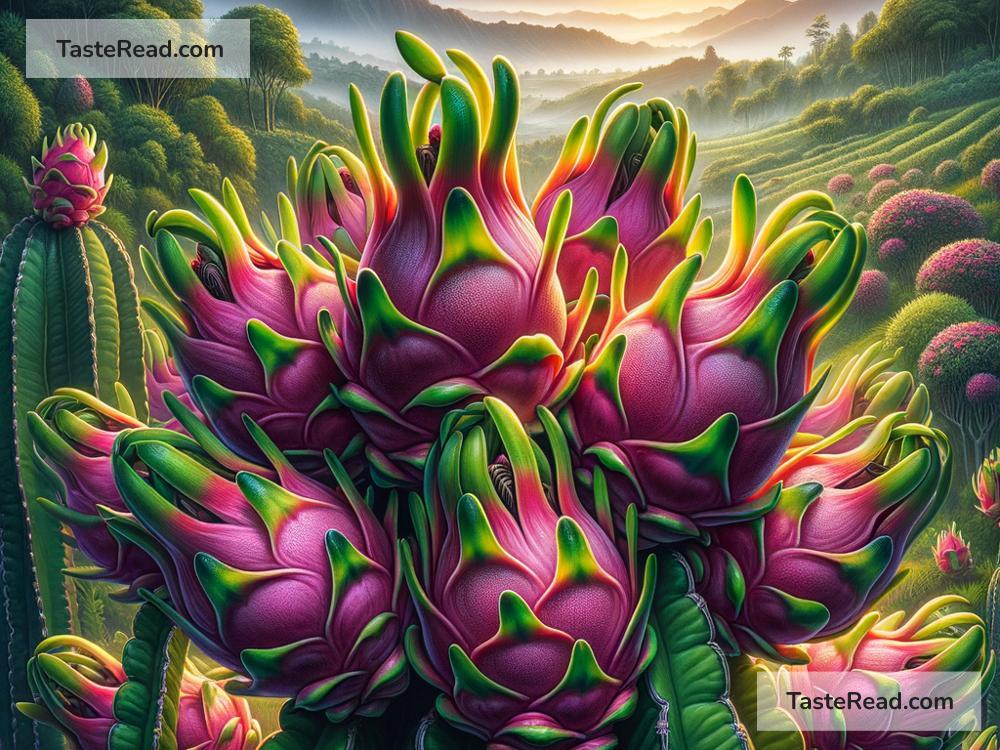The Fascinating History of Dragon Fruit Cultivation
Dragon fruit, also known as pitaya or pitahaya, is one of the most eye-catching fruits in the world. With its vibrant pink or yellow skin and spiky green scales, it looks like something out of a fairytale. While this exotic fruit is becoming more popular around the world, its history is as fascinating as its appearance. Let’s dive into the story behind dragon fruit cultivation and explore the journey of how this tropical fruit made its way to our plates.
What Is Dragon Fruit?
Before we talk about its history, let’s introduce dragon fruit. Dragon fruit grows on a type of cactus called Hylocereus, which thrives in warm, tropical climates. The fruit comes in a few different varieties:
– Pink skin with white flesh (the most common type).
– Pink skin with red or magenta flesh (sweeter and less common).
– Yellow skin with white flesh (smaller but very sweet).
Dragon fruit is slightly sweet and refreshing to eat, making it a favorite for smoothies, salads, and desserts. It’s also packed with nutrients like vitamin C, antioxidants, and fiber, giving it the reputation of being a “superfood.”
Where Did Dragon Fruit Come From?
Dragon fruit has an interesting origin story. It is believed to have originated in Central America, specifically in southern Mexico, Costa Rica, and El Salvador. Indigenous peoples in these areas ate dragon fruit long before it spread to other parts of the world. The Aztecs are thought to have enjoyed its mild sweetness and used it as a regular part of their diet.
During the time of European exploration and colonization in the 16th century, dragon fruit began to travel outside its native region. Spanish colonists are thought to have brought the seeds to different tropical areas, including Southeast Asia. Once the plant reached Asia, it found an ideal environment to thrive and quickly gained popularity.
How Dragon Fruit Got Its Name
The name “dragon fruit” is intriguing and mysterious, but its origin is unclear. Some believe the fruit’s scaly skin resembles the scales of a dragon, sparking the name. Others suggest it’s rooted in Asian folklore, where dragons represent strength and power. In countries like Vietnam and Thailand, dragon fruit is commonly known as “thanh long,” which means “green dragon.”
Regardless of how its name came to be, the fruit’s unique appearance makes it easy to see why people associate it with dragons and mythical creatures.
Dragon Fruit Cultivation in Southeast Asia
Once introduced to Southeast Asia, dragon fruit became widely cultivated, especially in Vietnam, Thailand, and the Philippines. Vietnam, in particular, took to dragon fruit farming on a large scale and is now one of the world’s leading producers. Farmers in Vietnam often grow the fruit along trellises, and the cactus plants can be seen stretching across vast plantations.
One of the reasons dragon fruit grows so well in Southeast Asia is that the climate in the region is ideal for cactus species. The combination of warm temperatures, high humidity, and nutrient-rich soil helps the plants thrive. Additionally, dragon fruit cacti are hardy and require less water compared to other fruit crops, making them an attractive option for cultivation in drier areas.
Interestingly, traditional farming methods have evolved over time. Today, farmers use advanced techniques, such as artificial light, to encourage the cacti to flower and bear fruit more than once a year. This dramatically increases production and helps meet the global demand for dragon fruit.
Dragon Fruit Goes Global
Dragon fruit remained a regional favorite until the 20th century, when international trade brought it to more countries. By the late 20th century, dragon fruit started gaining attention outside of Asia, especially in tropical and subtropical areas of North America, Australia, and parts of Europe.
In recent years, the demand for dragon fruit has skyrocketed due to its superfood reputation and the global interest in healthier eating. Countries like India, Israel, and Australia have begun cultivating dragon fruit to meet the needs of local and international markets.
The Role of Social Media
One of the surprising reasons dragon fruit became so popular worldwide is social media. Its vibrant colors and photogenic appearance make dragon fruit a favorite among food bloggers and influencers. Beautiful photos of dragon fruit smoothies and brightly-colored fruit salads help spread its appeal far and wide.
As more people showcase dragon fruit on social media, curiosity about the fruit grows, leading to greater demand. It’s now common to find dragon fruit in supermarkets across the globe, even in places where it’s not grown locally.
The Future of Dragon Fruit
With its growing popularity, dragon fruit farming continues to expand. Scientists and farmers are working together to develop stronger and better varieties of dragon fruit that can grow in diverse climates. Innovations such as greenhouse farming and improved pest control methods are helping make dragon fruit cultivation possible in regions outside of the tropics.
Dragon fruit farms are also embracing sustainable practices, such as reducing water use and minimizing chemical inputs. These changes help ensure that dragon fruit remains a healthy, environmentally friendly option for the future.
Conclusion
The history of dragon fruit cultivation is a story of exploration, adaptation, and global connection. From its humble beginnings in Central America to its status as a global superfood, dragon fruit has traveled far and wide. Its unique look, delicious taste, and health benefits have captured the hearts of people all over the world.
Whether you admire its beauty or enjoy its flavor, dragon fruit’s fascinating journey is a reminder of how agriculture and culture can work together. Next time you eat dragon fruit, you’ll have a deeper appreciation for the history behind this magical fruit.


